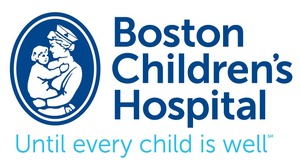Short-Term Wins, Long-Term Strategy: CRM at Boston Children’s Hospital
// By Jane Weber Brubaker //
 Managing change is hard, even for innovative organizations like Boston Children’s Hospital. “That’s something I hear in all the businesses I’ve worked with, from GE to Cigna to here,” says William Gagnon, senior director of global digital strategy and customer engagement at Boston Children’s.
Managing change is hard, even for innovative organizations like Boston Children’s Hospital. “That’s something I hear in all the businesses I’ve worked with, from GE to Cigna to here,” says William Gagnon, senior director of global digital strategy and customer engagement at Boston Children’s.
Change is risky, and healthcare organizations are risk-averse for a good reason: People’s lives are at stake. But resisting change has its own set of perils. Even if you’re ranked #1 like Boston Children’s, if your competitors out-innovate you and start solving stakeholder pain points, you could be left behind. So how do healthcare organizations overcome resistance and embrace meaningful change?

William Gagnon, senior director of global digital strategy and customer engagement at Boston Children’s
Digital transformation at Boston Children’s is laser-focused on making the shift to a customer perspective—and customers include a range of stakeholders, from internal physicians and referring physicians to patients, families, and even clinical operations.
A key component of Boston Children’s transformation strategy is implementation of a CRM system. Marketing has taken the long view, and over time has negotiated with individual departments to get all the pieces in place—a price it’s willing to pay to be able to accomplish the objective: a personalized, streamlined digital experience for all stakeholders. “If we look at things from a stakeholder’s perspective, [the question is] really, how do people want to be treated?” asks Gagnon. Four years ago, Margaret Coughlin, then chief marketing and communications officer at Boston Children’s (Coughlin was recently named senior vice president, chief marketing & communications officer at Mt. Sinai), initiated a relationship with CRM and PRM provider Evariant.

Bruce Armstrong, CRM/PRM manager at Boston Children’s Hospital
“We tried to hone out a role for CRM that is very much around prospecting,” says Bruce Armstrong, CRM/PRM manager at Boston Children’s. It has taken several years to aggregate all the data from across the organization and begin to take full advantage of the CRM/PRM platform. “We are reaching the finish line, I’m happy to say,” says Armstrong.
Using CRM to Impact Clinical Operations
When Gagnon came on board a little more than two years ago, he conducted a series of “digital workouts” with all service lines. Through these conversations, he saw an opportunity to pilot using the CRM system in a nontraditional way, to improve the waiting room experience for patients and solve a pain point for physicians. He also made an important discovery: “We found during the digital workouts that patients were not receiving instant confirmation of their appointment as people in today’s digital culture expect.”
The digital engagement team conducted the pilot with the urology department to have parents fill out patient registration forms online prior to their appointments. In this way, the forms more likely would be completed accurately and legibly. “There just isn’t enough space on the form, so people write in the margins and on the back, and honestly, people’s handwriting can be challenging to read,” says Armstrong.
How It Works
When a new patient makes an appointment, the information is loaded into the CRM. That triggers an instant confirmation email with a link to the digital registration form, directions to the facility, and helpful “know before you go” information.
Once the patient’s parent submits the form, the administration team at Boston Children’s receives an email notification, and prints the form. “Clinicians have the information days or weeks before the visit,” says Gagnon.

Rachel Neely, senior healthcare consultant at Evariant
The results were positive for all involved. “Waiting room time dropped, customer satisfaction increased, and admins were able to be more efficient, with less paper-handling at the front desk,” Gagnon says.
Rachel Neely is senior healthcare consultant at Evariant. “The patient registration concept is not new,” she says, “but Boston Children’s Hospital has taken the process one step farther than most, through a secure use of clinical intake mechanisms for patients that already have an appointment established with the health system.”
Positive Results Help to Sell the Vision
The digital registration form was launched last June. Parents can access it in a secure environment that does not require a username and password. The completion rate has jumped to 54 percent of families filling out the form ahead of time, and Armstrong believes it is because they don’t have to login to a portal. “As soon as you put something like this behind a portal, you’re down to 10 percent,” says Armstrong.
“This was a very intentional pilot project, intended to improve operational workflows and capacity with concrete and shareable KPIs,” says Neely. “Marketing created a visible, front-facing pilot program to show key stakeholders in the organization how CRM and marketing can ultimately extend a hand into the operational support realm.”
Next Up: Optimizing the Phone Channel
The customer engagement team plans to use the CRM system to impact the phone channel and improve conversion rates for request-an-appointment web forms that turn into actual appointments. “Healthcare is one of the few remaining industries where people will educate themselves, but at the end of that process, they are going to pick up the phone,” says Armstrong.
The data available in the CRM will add context that has been lacking to phone conversations with patients. “We are very user experience focused and we need to tie our CRM into our customer experience,” says Gagnon. “That way, when we speak to customers, we’re not acting like it’s a cold call. We’re going to be able to say, ‘We see that you’ve talked to us a few times about your child. Do you want to set up an appointment with a doctor?’”
The plan is to conduct the phone pilot with a few service lines as a proof of concept. “I think if we can get the data, it will make it easier to go to the organization and make the case that we need to do this in a bigger way across all the phone channels,” says Armstrong.
Integrating CRM with CMS
Concurrent with the CRM initiatives, Boston Children’s is working on a website redesign on the Sitecore CMS platform, and plans to launch the new site this summer. “We’re about 75 percent done,” says Gagnon. “We’ll be able to have it set up so when you enter the site it’ll be personalized.” A family that has a child with a heart condition, for example, could self-select and then would see only content relevant to their situation. A referring physician would have a personalized and streamlined experience.
The current website has millions of sessions a year. “The problem is that 99 percent of the site visitors are anonymous,” says Armstrong. The new website will use Evariant forms to collect user information. “Evariant web forms have a broad range of uses as they relate to consumer activation,” explains Neely. “Our clients primarily use the web form technology for lead generation and consumer engagement purposes, specific to campaign enrollment (downloading guides, requesting appointments, completing assessments) and event registrations.”
The Vision
“We have all the foundational pieces in place,” says Gagnon. “Now’s the time to actually sync them all together. The new vision for the life cycle of a visit is:
- Tracking visitors as new prospects
- Nurturing them to become leads
- Integrating with the call center to convert leads to patients (schedule an appointment)
- Tracking whether they came in or canceled
- Following up
Like many health systems undergoing digital transformation, Boston Children’s is moving forward on multiple fronts, and is committed to making strategic wins along the way. The digital patient registration form is one example. “I always have short-term wins and long-term strategies because the short-term wins prove the efficacy,” says Gagnon.
Armstrong adds, “Being able to prove to the organization that marketing is not a cost center, but rather a revenue generation center, is really what we hope to do over the next couple of years. The reporting that we can provide will allow marketing to be seen as a partner, with systems and processes that can address service line pain points.”
Point/Counterpoint
In a recent eHST article, No CRM? Here’s How to Prove Marketing Impact, we stated:
Making the business case for investment in infrastructure, support services, and especially a CRM system can be tough in pediatric hospitals. “You’re marketing to the parents, not the patients,” explains Alicia Shoemaker, senior account manager at Nationwide Children’s Hospital. “The people you’re marketing to aren’t necessarily the people in your database.”
In this article, we’re talking about how a CRM system can provide the framework for digital transformation in a pediatric hospital. We asked Rachel Neely, senior healthcare consultant at Evariant, to share her perspective.
eHST: Other children’s hospitals have reported that they struggle to get investment for a CRM system because they are marketing to parents, not patients. What is your point of view?
RN: Marketing is responsible for creating a product’s inherent utility. This process does not change whether a health system is marketing to a parent or a patient—you are still marketing the health system’s core services and values.
It is really only the content and tactics within a pediatric marketing outreach program that require adaptation. You develop content that primarily speaks to the parent, versus the pediatric patient, since nine out of ten times, it’s the parent who is seeking care and treatment for their child.
The emphasis still remains on initiating and maintaining an educational, ongoing conversation with the product buyer, which in this case just happens to be the parent.
As it relates to technical connection points, our system has a sophisticated house-holding algorithm that ultimately ties the parent (guardian)/child relationship together, to effectively allow a household to continue communicating directly with the adult, while tracking the corresponding downstream activity of the actual patient, for complete engagement and ROI measurement.
Jane Weber Brubaker is editor of eHealthcare Strategy & Trends, and chair of the eHealthcare Leadership Awards.

